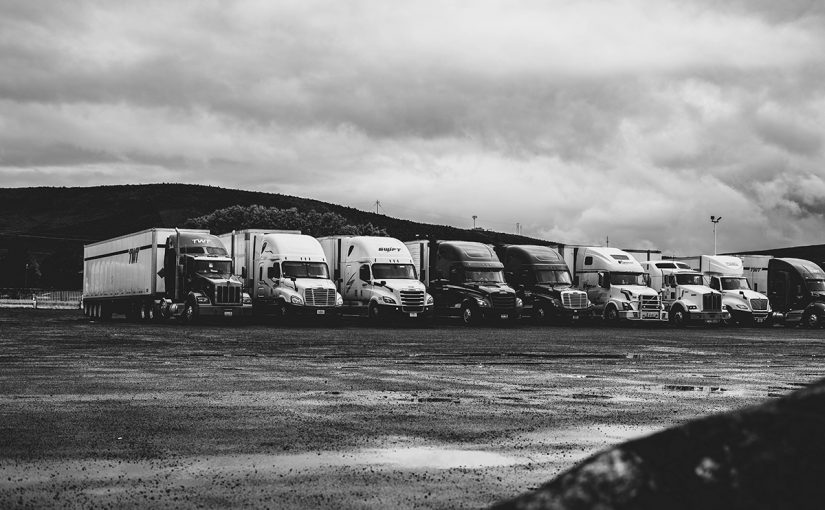The Australian trucking or road freight industry has been one of the strongest contributors to the economy over the last five years. With a growth of 2.4% per year, the industry now consists of more than 41,000 businesses and employs around 250,000 professionals.
But, before it became the massive industry it is today, the trucking industry experienced countless roadblocks and challenges along the way. Let’s look back at the history of trucking in Australia.
The Early Years
Trucking in Australia was once composed of inefficient trucks called steam-hauled road trains. They were used at the Yudnamutana copper mining valley in South Australia way back in 1863, when the machines were first introduced. It wasn’t until 1912 that hauling trucks were fitted with internal combustion engines and only by 1914 did the manufacturers start developing petrol-engined trucks, including half-track vehicles that can tow two large trailers.
Today, road freight laws allow truck companies to do transport tasks interstate and travel around the 353,331-kilometre paved roads in the country. But that wasn’t the case back in 1920 when a general agreement between various states prohibited interstate road transport. Back then, the state governments believed that the rail system was enough for transporting goods from state to state. Hence, they just extended the rail lines to accommodate the national road freight requirement.
Trucking Restrictions
Things turned around, however, in 1942 during World War II when Australia experienced an overloaded railway system and scarcity of coastal shipping. Trucks were once again called into action and transported freight from one capital city to another.
After this turn of events, the trucking industry grew quite astoundingly. That was because road transport only requires minimal handling of goods and very advantageous when transporting fragile objects. Still, long-distance road transport was not allowed at that time and many restrictions were imposed on the industry. Indeed, in 1956, the Road Maintenance Tax was introduced by the government to the great dislike of many truckers. Other restrictions included tight-axle weight limits, low-speed limits, and driving hours limitations.
Growth and Improvement
But there was no stopping of the trucking industry’s continuous growth and in the 1960s, the competition increased greatly. Start-ups converted ex-military trucks to road freight haulers and began competing with large companies that operated most of Australia’s truck fleet. Contracts are made verbally, and businesses started to decoratively paint and fit out their trucks to show their distinctions.
The quality of trucks also improved drastically during the decade. There were better canvas and double cover that were applied to protect the loads much better. And in the 1970s came a new advancement in trucking technology, the 370hp turbocharged diesel engine. It allowed bigger trucks to operate and haul bigger payloads for better business.
However, road maintenance tax payments also increased proportionally with the size of the truck used. Truckies around Australia started to rebel and demanded the abolition of the road taxes. This led to the Razorback Blockade, a 9-day blockade that started on April 3, 1979, by five rig owners in NSW and followed by more than 2,000 owners and drivers across Australia. The transport ministers then agreed to abolish the road maintenance tax.
National Support for Trucking
After this event, the government started to show support for the trucking industry. Good evidence was the establishment of the Australian Road Freight Transport Advisory Committee and the creation of reforms to trucking costs and licensing. The second stage of these transport reforms in 1988 resulted in the increase in the highway speed limit of trucks to 100km/, the establishment of the eastern states’ uniform driving hours, and the revision of gross tonnage limit and registration charges.
By the 1990s, the trucking industry has reached efficiency in transport logistics, which improved productivity and reduced costs in the road freight business. During the 2000s, new technologies were developed to increase the safety of heavy vehicles. And today, the industry is innovating for more sustainable road transport, eliminate carbon footprint, and help preserve the environment.
The Future of Trucking in Australia
With more than 500,000 trucks and counting, the future looks bright for trucking in Australia. It’s the most profitable sector in both the logistics and transport industries and is expected to have a $60.2 billion income from 2020 to 2028. The number of employees is also projected to increase by more than 20,000 over the next 5 years.
Aussie Truck Loans can help you enter the trucking business. We offer a wide array of commercial and personal finance for new and used trucks with the most competitive rates. We also have a variety of truck loan packages that suit every type of business need and financial status.
Call Aussie Truck Loans on 1300 889 669 for a pre-approved truck loan or apply online and get a jump start on your trucking business today.




